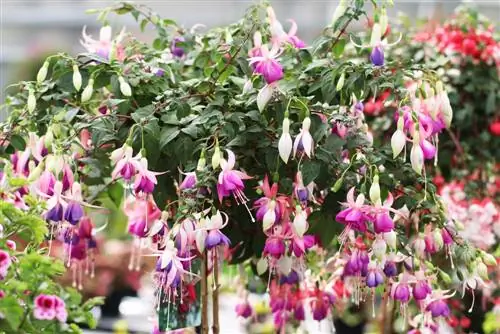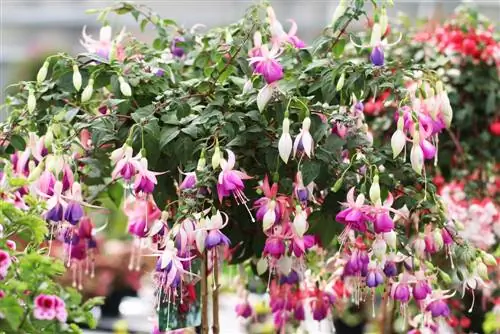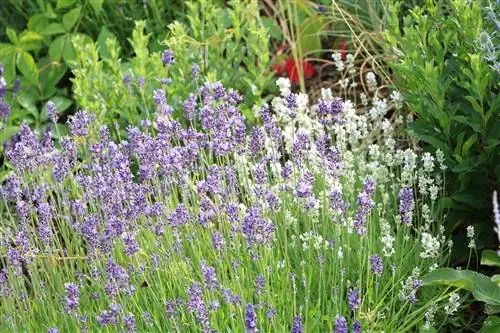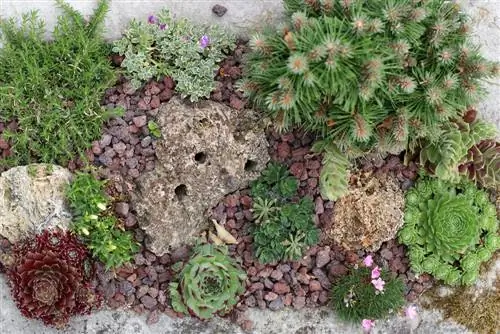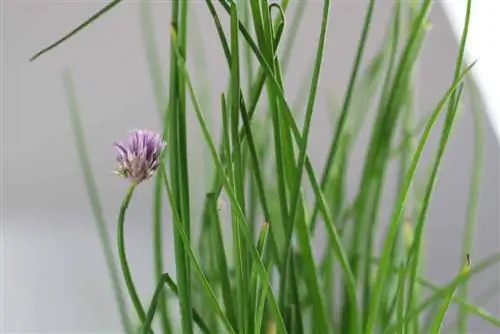- Author admin [email protected].
- Public 2023-12-17 03:39.
- Last modified 2025-01-24 12:45.
If you choose hardy plants for your own garden, you have a large selection of plants available that adorn the garden as both green and flowering plants. Even exotic species - such as the banana - are now available in winter-hardy and perennial versions. Perenniality and winter hardiness are particularly important for hedges, which, once planted, should last a very long time.
The Green Flower Tea (green tea plant)
A truly exotic and at the same time exciting hardy and perennial plant with a thousand-year history in China is the Green Flower Tea. The plant is evergreen and also very easy to care for. In summer it is content with a large pot and a bright and warm location, but only insists on plenty of moisture. What is also practical for smaller gardens or balconies is that this plant grows very slowly.
From October to February, the plant produces delicate yellow flowers that smell wonderful. Green leaves can be used all year round for high-quality green tea, a drink that has an invigorating effect and is considered to be very good for he alth, not only in China. With a high zinc content and vitamin C content, the tea made from the leaves strengthens the body's defense system, also supports skin functions and is even said to slow down the aging process due to its anti-oxidative effects.
Tip:
If you want to brew tea from your own harvest, you should keep several plants in your own garden or on the balcony, as the plant grows very slowly.
The hardy fuchsia
The pink fuchsia is known to many hobby gardeners. However, the hardy fuchsia with its blue flower color is less well known. Thanks to its winter hardiness, it is possible to plant this exceptionally beautiful fuchsia both in beds and in pots - for example for the balcony. The bright blue flowers turn slightly purple as they bloom. Thanks to its upright growth and great flowering, it is a beautiful decoration for the garden. The hardy fuchsia can survive the winter on its own down to -5 °C. If it gets winter protection from a hobby gardener, this plant can easily tolerate -15 °C.
The hardy eucalyptus Azura
This eucalyptus impresses with its azure blue color and its special resistance to winter temperatures. This special variant of eucalyptus can easily tolerate temperatures as low as -20 °C. The strongly blue colored leaves of the plant exude a very beautiful and intense scent. The eucalyptus is very attractive as a pot plant. But the plant also looks very beautiful as a single plant in the garden bed and gives the green oasis the look of a cottage garden. With the type of pruning, the hobby gardener can decide for himself whether the plant should grow as a bush in the compact version or more into a small tree. What is very pleasant is that the interesting plant is very undemanding to care for.
Tip:
The eucalyptus's spicy scent drives away flies and other insects from its environment.
The hardy banana tree Musa Basjoo Sakalinensis
If you appreciate exotic plants in the garden and want to combine the visual special features with the enjoyment of harvested fruits, this hardy banana tree is a good choice. Unlike its tropical counterparts, the perennial can easily tolerate winter temperatures down to -10 °C. If the plant gets a sunny spot, it will reward you with delicious fruit in the summer. The hardy banana tree is fast-growing, easy to care for and really very decorative. It also reaches a height of up to 3.5 meters. The banana tree needs a little support to survive the winter through winter cover.
The hardy geranium 'White Snow Double'
Geranium fans have often regretted that the lushly flowering plant only blooms in the warm season, but also has to be replanted every year. Things are different with this winter-hardy variant of the geranium. The relatively new geranium species was bred in England. In summer it also impresses with its double, permanent flowers that last for months, which is very similar to the well-known balcony geranium. If you want to plant the geranium in two colors, you can plant it in combination with the “Blue Birch Double” variety, which in turn works very well in a purple-blue tone both in combination with the white variety and on its own.
A hardy container palm
Anyone who appreciates palm trees in their own garden has always had the problem that the palm tree had to be taken indoors to overwinter or even had to spend the winter in the nursery if there was a lack of space. The concern Trachycarpus fortunei is again a pot palm that also accepts winter temperatures without any problems. Outside temperatures down to -15 °C are no problem for the palm tree and it can therefore stay outside even in a harsh winter. Nevertheless, the palm tree exudes a southern flair in your own garden all year round, and it also looks very good on the balcony or terrace.
The hardy bamboo hedge
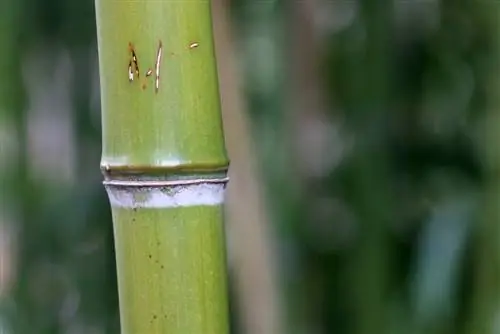
With the name 'Fargesia murielae Simba', the bamboo hedge impresses as an exotic yet winter-hardy plant. The decorative and green leafy hedge is a beautiful alternative to classic hedge plants. It also grows relatively quickly, meaning it can provide privacy protection for your own garden within a very short time. Since the plant remains green even in winter, it is a special decoration for the garden that filters out street noise and prevents unwanted views into the garden even in winter.
Tip:
This bamboo is also suitable as a hedge plant because it is able to filter bad air and thus improve the air quality in your own garden, even on busy roads.
Frequently asked questions
How can I get the planters through the winter?
So that a planter for hardy potted plants can survive the cold season, you should pay attention to this feature before purchasing. It is important that the planter is not made of porous material that gets soaked with irrigation water, which in turn destroys the planter at freezing temperatures.
How can I support hardy plants in extreme temperatures?
It is always important that the plant is protected from the cold towards the ground. The best way to do this is to place natural materials or bubble wrap under the potted plant as insulation for the winter to keep the ground frost away. Otherwise, a jute bag draped around the plant and tied loosely can protect the plant from excessively frosty temperatures. You should never use plastic films as insulation, because heat and moisture build up underneath them, which causes the plant to rot and mold.
What you need to know about perennial, hardy garden plants
Most people have perennial plants (see also annual and biennial plants) in their garden without being aware of it, as shrubs and trees are also included. In general, the term perennial plants for the garden refers to all those plants that can be used for several years. Some of them need protection from winter, others can remain in the garden in winter.
Frost protection for perennials
- Perennial plants for the garden that remain in the garden in winter often need special protection from frost. To do this, you often have to put a layer of leaves on the ground around the plant or protect it from frost damage with straw and a jute bag.
- For potted plants that are perennial, you often have to cover the pots with straw and a jute bag to protect the sensitive root ball from frost and cut back the plant itself.
Perennials that prefer to overwinter indoors
- The geranium is certainly one of the plants that you need to protect and keep indoors in winter. However, it is sufficient to put them in a dark place, for example the basement. Watering is not necessary during this time. The following year, dry leaves are removed and the flowers are planted in fresh soil.
- For plants that are supposed to be hardy, but you are often not sure, you should consider storing them in the apartment if necessary. This particularly includes the oleander.
- The bougainvillea, which is becoming increasingly popular on more and more terraces, lasts for many years if kept outside in summer but indoors in winter.
Frost germinators among perennials
- Some plants can already be used as seeds and may require frost to germinate properly. This includes, for example, wild garlic, which can be used for several years but must be sown in autumn in order to sprout the following spring.
- Trees like the maple or the beech are also frost germinators. If you want to grow a hazelnut bush, you should store some hazelnuts in the freezer for a few weeks.
Popular perennials and trees
- The perennials are often flowering plants that should be cut regularly as bushes and hedges, especially in spring, to remove wild shoots.
- Roses are available as climbing or bush roses and ground cover. The same care instructions apply to everyone. When it comes to climbing roses, you should ensure that you attach a rose tendril as a climbing aid; bush roses occasionally need to be stabilized and shaped with a rope. It is important to cut back roses well in the fall.
- The same applies to trees. Regardless of whether it is a lilac or an apple tree: both do not require much care, but they must be protected from pests and pruned in spring.

